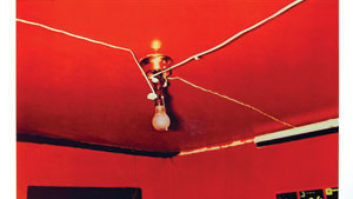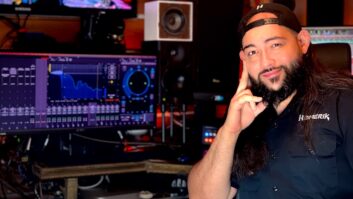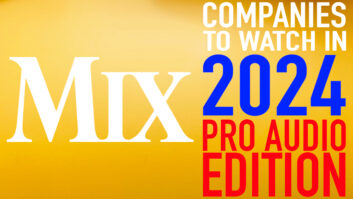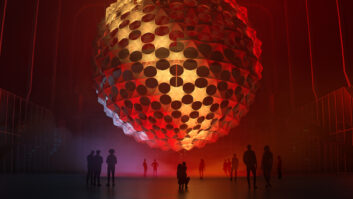 Todd Rundgren was pretty much flying by the seat of his pants when he recorded “Hello It’s Me” in 1972, and he says that kind of spontaneous situation in the studio was not uncommon in those days.
Todd Rundgren was pretty much flying by the seat of his pants when he recorded “Hello It’s Me” in 1972, and he says that kind of spontaneous situation in the studio was not uncommon in those days.
“The first time I stepped into a studio to audition with The Nazz was probably in ’67, so it was barely five years on from when the expectations were that you could go into a studio and play everything live,” Rundgren recounts. “That’s how all our auditions went: ‘Get in there and play, you have half an hour; play as much of as many songs as you can in half an hour, you’re going direct to tape.’”
“Hello It’s Me” was the first song Rundgren ever wrote. It was about a high school romance gone bad, originally recorded in 1968 by his band The Nazz. That version is roughly 10 beats per minute slower than the one recorded later.
But the rather crazy thing about the 1972 version is that Rundgren really didn’t have a game plan for the arrangement when he went into New York’s Record Plant to record it as part of the final sessions for side four of the double album Something/Anything.
When he started the album, his original intent was to play all the instruments himself, but as the project progressed into an album and a half, he decided to go for the full double album. `He didn’t know what to do with the fourth side, but he definitely knew he didn’t want to have to write any more songs.
“I figured I had written and played enough of it all myself,” the artist explains. “What could I do that was different? I resolved that I would do everything live in the studio with no overdubs.”
So one morning, he called his organist friend Mark “Moogy” Klingman to find some musicians and singers to record three songs—“You Left Me Sore,” “Dust in the Wind,” and “Hello It’s Me.” He had a vague vision in mind, and he requested the appropriate musicians, including horns and background singers. The players consisted of Klingman, John Siomos on drums, Stu Woods on bass, Robbie Kogale on guitar, Barry Rogers on Trombone, Randy Brecker on trumpet and Michael Brecker on tenor sax.
Rundgren basically arranged the song anew, on the spot in the studio.
“I hadn’t written out the arrangements,” he recalls. “I had something stewing in my head and said, ‘Here are the changes to the song,’ then taught them the changes, found the feel I liked. If somebody played something I didn’t like, I’d say, ‘No, don’t play that, change it to something else.’ I wanted it to be less dirge-y than the original and have a little more energy to it. Music had evolved a little, so I wanted something that sounded a bit more contemporary, as opposed to the original stripped-down band.”
Rundgren produced the session and basically did the engineering on the project. He placed all the mics, and the studio engineer pressed Record.
On the hit single, the minute you hear the three notes on the bass leading into the song you know it’s “Hello It’s Me.” Rundgren says it was a part bassist Stu Woods came up with in the studio.
Rundgren says on the album version there are about three or four false starts before the song begins.
“When we were in the studio, a lot of people had a hard time hearing where they were supposed to come in,” Rundgren remembers. “The only person who was supposed to come in on four was the bass, and everyone else was supposed to come in on one, but everyone kept coming in on four. So if you listen to the album version, you can hear all these false starts.”
Rundgren says the studio had a custom board, “part of the brag of the Record Plant, but also part of the problem,” he recalls. “The first session I ever did at the Record Plant was a band I was producing out of Philadelphia called American Dream. They had this brand new, custom-built console. The engineer in there didn’t know the console because he had never worked on it before. After a day or two I got frustrated with him futzing around with it and essentially told him to leave and engineered it myself. It was the first time I ever did a hands-on engineering project.”
For “Hello It’s Me,” it was a similar console and a little strange. Research reveals that in 1971 New York’s Record Plant had a Scully 12-track tape machine and Spectra Sonics Board, but Rundgren’s memory is hazy.
While there was an isolation booth, Rundgren used it for the five background singers, mostly from the Broadway cast of Hair he says, so he had to place the drums in the studio, goboed off from everything else.
On the drums, Rundgren says he liked to put a Shure SM57 just off the rim of the snare drum. “I usually never miked the bottom,” he explains. “I didn’t like the sound of the snares. I miked the drum on the top, but a little bit away from the drum so you could get a little bit of the snare noise.”
He says he probably used 87s for overheads and dynamic mics all around on the toms.
“My history until then as an engineer was mostly with rock players, so I wasn’t miking jazz players who were playing softly,” he says with a laugh. “Most rock drummers play at one level, and that’s loud. I was used to miking for that style of playing, so everything was close-miked.”
Rundgren sang and played the piano—which he says was fairly well isolated—simultaneously. “Which was unusual, because I had never performed the song before,” he says. “For all of the stuff on the live side, it was songs I hadn’t performed before.”
He says he probably used a Shure 87 vocal mic, his standard choice back then.
“That was the first mic an engineer put in front of me to sing into, so I figured, ‘Okay, this must be the right mic,’” Rundgren says. “I discovered more recently that my voice sounds a little better through a dynamic mic as opposed to a condenser mic. In those days I wasn’t making that kind of distinction.”
Rundgren says the Brecker Brothers (Randy on trumpet, Michael on tenor sax) came up with their own arrangement.
“A lot of it was just like blowing changes, and then I suggested, ‘Why don’t you just do a little riffing when we get to the bridge of the song,’ and then they came up with this funky riff at the end.”
Rundgren says he’s fairly certain they didn’t do more than half a dozen takes of the song, adding, “We did three songs over a three-hour session.”
Rundgren mixed the record at Woodstock’s Bearsville studio B, which he says originally had a board from the mobile truck he had used on The Band’s Stage Fright album he had recorded at the Woodstock Playhouse.
While mixing “Hello It’s Me,” Rundgren says he did not do anything elaborate, just put a little reverb and ambient sound on the track.
“I wanted everything to sound live and not too processed. Everything on that side is pretty dry, so not too much in the way of effects.” he says.
“I Saw the Light” was the first single released off the album, and it reached No. 16. Next was “Couldn’t I Just Tell You,” which didn’t do well, and then the record company edited the album version of “Hello It’s Me” to release it as a third single in September 1973. When it made it to No. 5 on the Billboard Top 100, Rundgren was surprised.
“I didn’t think it would be a hit,” Rundgren says of the song that has been used in many films and TV shows. “I didn’t think any of that live stuff was appropriate for a single. I always thought it was too raw or too rough, but apparently somebody heard it and thought it was a single.”







